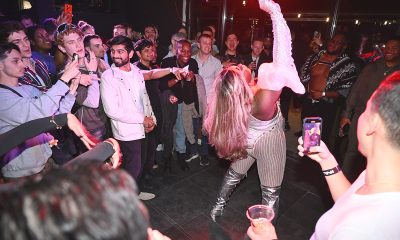a&e features
Queer Alvin Ailey dancers ready triumphant Kennedy Center return
Three LGBT performers on why dance is their artistic medium
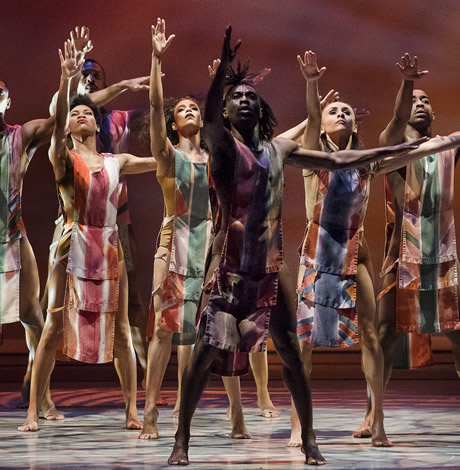
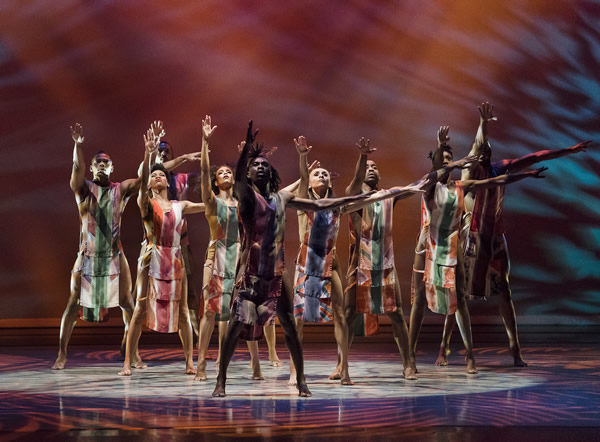
The world-renowned Alvin Ailey American Dance Theater returns to the Kennedy Center Feb. 4-9 for its annual winter engagement. Led by Artistic Director Robert Battle, this year’s program will include regional premieres of three works, two entirely new productions and two company premieres.
Tickets start at $49. Full details on time, dates and more is online at kennedy-center.org.
We asked three of the company’s LGBT dancers to share their training, favorites, goals and more.
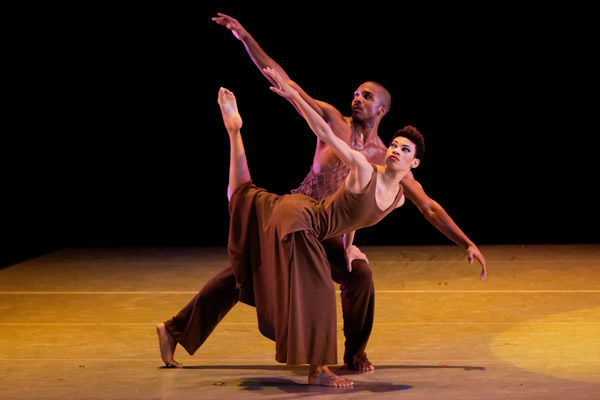
NAME: Ghrai DeVore-Stokes
HOMETOWN: Washington, D.C.
AGE: 30
RELATIONSHIP STATUS: Married
IDENTIFY AS: I don’t subscribe to labels but if forced, I would say either queer or pansexual.
CURRENT CITY OF RESIDENCE: Brooklyn
HOW LONG WITH ALVIN AILEY: 10 years
WHAT DREW YOU TO THE COMPANY: Mr Ailey died on the day I was born so I always felt a connection to him. Also I was inspired by the work that the company has done to celebrate and illuminate the African diaspora and the lives and legacies of people of color in America.
BRIEFLY DESCRIBE YOUR DANCE BACKGROUND: I have studied and trained extensively in ballet (Vaganova) and modern (Horton and Graham). I have also studied jazz and some tap.
HOW LONG DANCING PROFESSIONALLY? 14 years
FAVORITE CURRENT PIECE TO PERFORM: A mix between Jamar Roberts’ “Ode” and Aszure Barton’s “Busk.”
HOW MANY TIMES HAVE YOU DANCED AT THE KENNEDY CENTER PREVIOUSLY? This year will be my 10th. My first was 10 years ago in my first year with the company.
THOUGHTS ON THE VENUE/AUDIENCE: The Kennedy Center stage is one of the most beautiful stages and theaters I have performed in. I might be a bit biased because D.C. is my hometown, but in all honesty it’s beautiful to come to such a majestic stage as our first stop on our domestic tour usually. The audience also loves us. We always feel the energy from the audiences at Kennedy Center.
BRIEFLY DESCRIBE YOUR PERSONAL PHILOSOPHY OF ARTISTIC EXPRESSION/DANCE: It’s really important to me that I tell a story every time I walk on the stage. I want to invoke a feeling in the audience. I want people to remember their humanity when I’m on the stage. I want people to be able to relate to me as well. I want the audience to have left the theater feeling something.
BRIEFLY DESCRIBE YOUR PERSONAL FITNESS PROGRAM: I got into the company when I was quite young and as the years have passed, it’s become necessary for me to start slower and build up to more strenuous activity. I like to start with some sort of floor work. Maybe a bit of rolling around, feeling my muscles and bones on the floor waking up the joints. Then perhaps a bit of stretching to release the tendons and ligaments. I like an all-inclusive class. That usually means something that incorporates all of the things I will be required to do during the rehearsal day. It’s very important that my back, my neck, my hips and my feet are thoroughly warmed up before I start trying to throw my body around. On the off time I like to do a bit of gym work. Resistance band, elliptical. I also just learned to swim and that’s good for stamina and breath monitoring.
OF ALL THE ARTISTIC MEDIUMS AVAILABLE, WHY DID YOU CHOOSE DANCE? I chose dance because it encompasses so much. You must have a working understanding of musicality. You must be a bit of an actor. Sometimes you must use your voice. All while finding the best angles and being cognizant of the people around you. You’re constantly using your brain and all of your body. It also important to know the aspects of the theater so that you help the crew run the show smoothly. Being a performing artist means you are always learning.
WHO ARE YOUR FAVORITE DANCERS OF ALL TIME? I don’t really have a favorite dancer of all time. My astrological chart doesn’t really allow me to choose one person out of the many who move me. I like dancers who are virtuosic and push boundaries. I like to feel as if at any moment the dancer will fly off the stage and into the cosmos. I love to see someone dancing both with technical prowess and complete abandon.
WHAT LGBT THEMES ARE IN YOUR REPERTOIRE? The fact that the company is made up of dancers who are spanning the spectrum of sexuality means that whenever we walk on stage, we are living and showcasing the truth of our very existence. Take “Ode” for example. There is a cast of men and a cast of women and no matter how we identify, we must love and acknowledge the humanity of our fellow dancers. Our pieces don’t often center around LGBTQ themes but we bring it to the forefront simply because of who we are as people.
WHAT’S THE MOST ARDUOUS/TEDIUS PART OF THE DISCIPLINE/LIFESTYLE? Making sure our bodies are at 100 percent no matter what. More often than not these days it’s difficult for me to get out of bed. It might be hard because I need more sleep or it might be hard because my body is in pain but I have to figure out to get my body working efficiently in order to perform at the caliber that’s required. It’s also hard balancing the personal and the professional. My wife is a teaching and performing artist currently based in Dakar and trying to match our schedules is always tedious. Sometimes you just want to break down but in those moments I think we take comfort and strength from each other as a company so that we can support each other.
WHAT WOULD YOU LIKE TO BE DOING IN 15 YEARS? I’d like to be fluent in at least five languages with three or four more tattoos. I would like to be living in either Japan or Europe and own either land or property somewhere. I’d like to be a model and or working on the silver screen. I’d also like to be a rehearsal director or be setting works for a company. I have a lot of different interests that span all walks of life. I want to be continuing to explore life in 15 years.
NAME: Chalvar Montiero
HOMETOWN: Montclair, N.J.
AGE: 31
RELATIONSHIP STATUS: Single
IDENTIFY AS: Gay
CURRENT CITY OF RESIDENCE: New York, N.Y.
HOW LONG WITH ALVIN AILEY: five years
WHAT DREW YOU TO THE COMPANY?: I was drawn to this company because they looked like me. I had never seen something like that before. On top of that, the control, personality and finesse of each artist are unmatched.
BRIEFLY DESCRIBE YOUR DANCE BACKGROUND: I started my formal training at Sharron Miller’s Academy for the Performing Arts. I attended a few summer intensives at The Ailey School before going to Purchase College at SUNY (state university of New York) and getting my degree in dance. From there I freelanced and worked with great talents, spending most of my time with Kyle Abraham’s Abraham.In.Motion. I joined Ailey II the summer of 2014, and joined the Alvin Ailey American Dance Theater in the spring of 2015.
HOW LONG DANCING PROFESSIONALLY? 11 years.
FAVORITE CURRENT PIECE TO PERFORM: Judith Jamison’s “Divining”
HOW MANY TIMES HAVE YOU DANCED AT THE KENNEDY CENTER PREVIOUSLY: four
THOUGHTS ON THE VENUE/AUDIENCE: This theater is one of my favorite venues of the entire domestic tour. The audience is so generous and tickets are always sold out. D.C. is one of my favorite cities to visit.
BRIEFLY DESCRIBE YOUR PERSONAL PHILOSOPHY OF ARTISTIC EXPRESSION/DANCE: Dance is a natural way to communicate for all humans. I think we are naturally drawn to the arts because it’s the healthiest and most fulfilling way to convey any message. The more we invest in our modes of communication through the arts, the more we heal ourselves as a community/nation.
BRIEFLY DESCRIBE YOUR PERSONAL FITNESS PROGRAM: Outside of dance, the amount of time I spend cross training depends on the demand of the repertoire. I don’t do much cardio because I do that all day in rehearsal. Instead I focus on strength training in my shoulders, back and glutes, making sure those muscle groups are supported.
OF ALL THE ARTISTIC MEDIUMS AVAILABLE, WHY DID YOU CHOOSE DANCE? I didn’t choose dance. I’ve tried it all but nothing felt natural to me besides this form of expression.
WHO ARE YOUR FAVORITE DANCERS OF ALL TIME: Matthew Rushing. Clifton Brown. Bahiyah Hiba, Linda Celeste Sims. Sylvie Guillem. Darcey Bussell. Desmond Richardson. (I can go on and on.)
WHAT LGBT THEMES ARE IN YOUR REPERTOIRE? I don’t see any specific themes of LGBTQ identity in the repertoire. Instead, it’s the responsibility of the artist to bring their truth to whatever they’re given and make sure their authenticity shines through, regardless of the subject matter
WHAT’S THE MOST ARDUOUS/TEDIUS PART OF THE DISCIPLINE/LIFESTYLE? The most tedious, but beneficial, thing is rehearsing. Making sure everyone is on the same page, with the same information is the part that takes the most time, but there’s nothing more rewarding than sharing a stage with your peers when everyone is comfortable and confident in what they know and who they are.
WHAT WOULD YOU LIKE TO BE DOING IN 15 YEARS? In 15 years I see myself being in the other side of the room, cultivating and grooming dancers by way of being a rehearsal director/choreographer. It’s a dream of mine to give back to the next generation of performers, making sure that integrity, excellence and consistency are a few of the core values that are focused on.
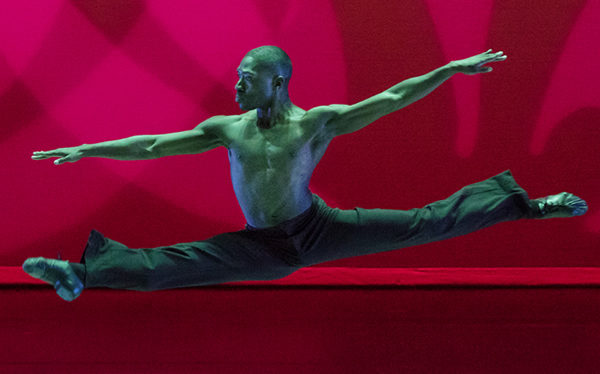
NAME: Michael Jackson, Jr.
HOMETOWN: New Orleans, La.
AGE: 32
RELATIONSHIP STATUS: Single
IDENTIFY AS: Gay
CURRENT CITY OF RESIDENCE: Bronx, New York
HOW LONG WITH ALVIN AILEY: This is my eighth season.
WHAT DREW YOU TO THE COMPANY: I had never seen black people, especially men, move and shown so beautifully elegant and commanding.
BRIEFLY DESCRIBE YOUR DANCE BACKGROUND: Started dancing at the prestigious Duke Ellington School Of the Arts. I first danced professionally with Dance Theatre of Harlem Ensemble company in 2005. Then going on to dance for Dallas Black Dance Theatre and Philadanco before joining Ailey in 2012.
HOW LONG DANCING PROFESSIONALLY? 14 years
FAVORITE CURRENT PIECE TO PERFORM: Jamar Roberts’ “Ode”
HOW MANY TIMES HAVE YOU DANCED AT THE KENNEDY CENTER PREVIOUSLY: My first performance at the Kennedy Center was at the age of 17 back in high school where I attended a Dance Theatre of Harlem Residency led by the spectacular Lorraine Graves. I returned years later with Ailey in 2012 and have been back every year.
THOUGHTS ON THE VENUE/AUDIENCE: The Kennedy Center is beautiful all around. The theater is dripping in elegance and the audience is always lively and engaged. So many historical moments for African-American artists here so that makes it just all the more special.
BRIEFLY DESCRIBE YOUR PERSONAL PHILOSOPHY OF ARTISTIC EXPRESSION/DANCE: I feel that dance is my language and medicine. I am a nervous person and performing most times challenges that. So when the lights and people are stripped away I know that dance on my body heals me.
BRIEFLY DESCRIBE YOUR PERSONAL FITNESS PROGRAM: Our work schedule is so intense so mostly the dancing is enough. But I truly enjoy the gym. I use it for muscle building and rehabilitation. I like getting to choose the intensity of my workout. Mostly based on the intensity of my dance schedule of the season.
OF ALL THE ARTISTIC MEDIUMS AVAILABLE, WHY DID YOU CHOOSE DANCE? It just felt very natural to me from day one. I say it choose me. I didn’t start dancing at a really young age like most. I was thrust into the dance world in high school and never looked back. I know it’s cliché but it was so just much fun!
WHO ARE YOUR FAVORITE DANCERS OF ALL TIME: Alvin Ailey and Arthur Mitchell
WHAT LGBT THEMES ARE IN YOUR REPERTOIRE? Jamar Roberts new work “Ode” is about the victims of gun violence. And a group that knows that subject extremely well is the LBGTQ community. It’s a work with an all-male cast as well as an all-female cast. Though it’s not necessarily token “gay,” I do find dancing with the other men in this work brings a sorrowful yet prideful feeling about my experience as a gay black man.
WHAT’S THE MOST ARDUOUS/TEDIUS PART OF THE DISCIPLINE/LIFESTYLE? The most difficult part for me is the fight for balance when it comes to work and play. Dance is my life and it not only requires a physical demand but emotional as well. I find myself still working on dropping all the emotions of work and focus of personal ones. And vise versa.
WHAT WOULD YOU LIKE TO BE DOING IN 15 YEARS? That’s the question of 2020! I have been dancing for so long and only now am I starting to think about a true next step for me. It’s extremely scary but exciting. But it’s nice to know I can maintain my craft, do what I love, see the world and get compensated for it while I figure it out.
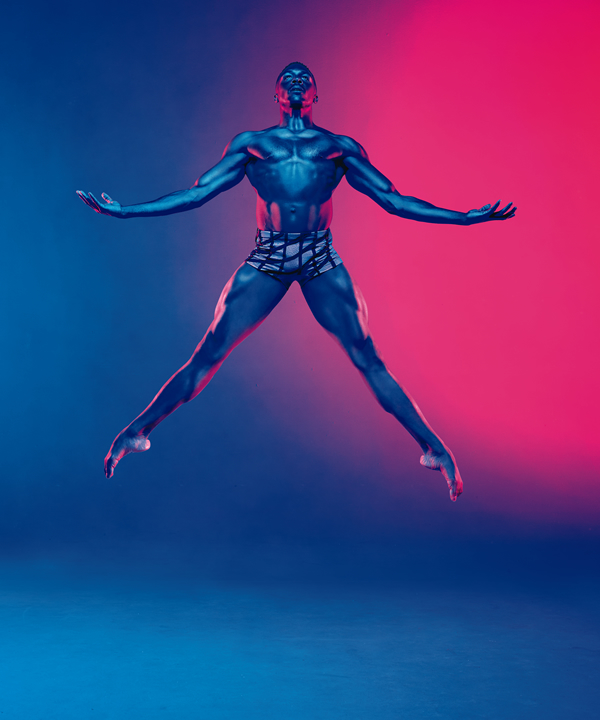
a&e features
Your guide to D.C.’s queer New Year’s Eve parties
Ring in 2026 with drag, leather, Champagne, and more
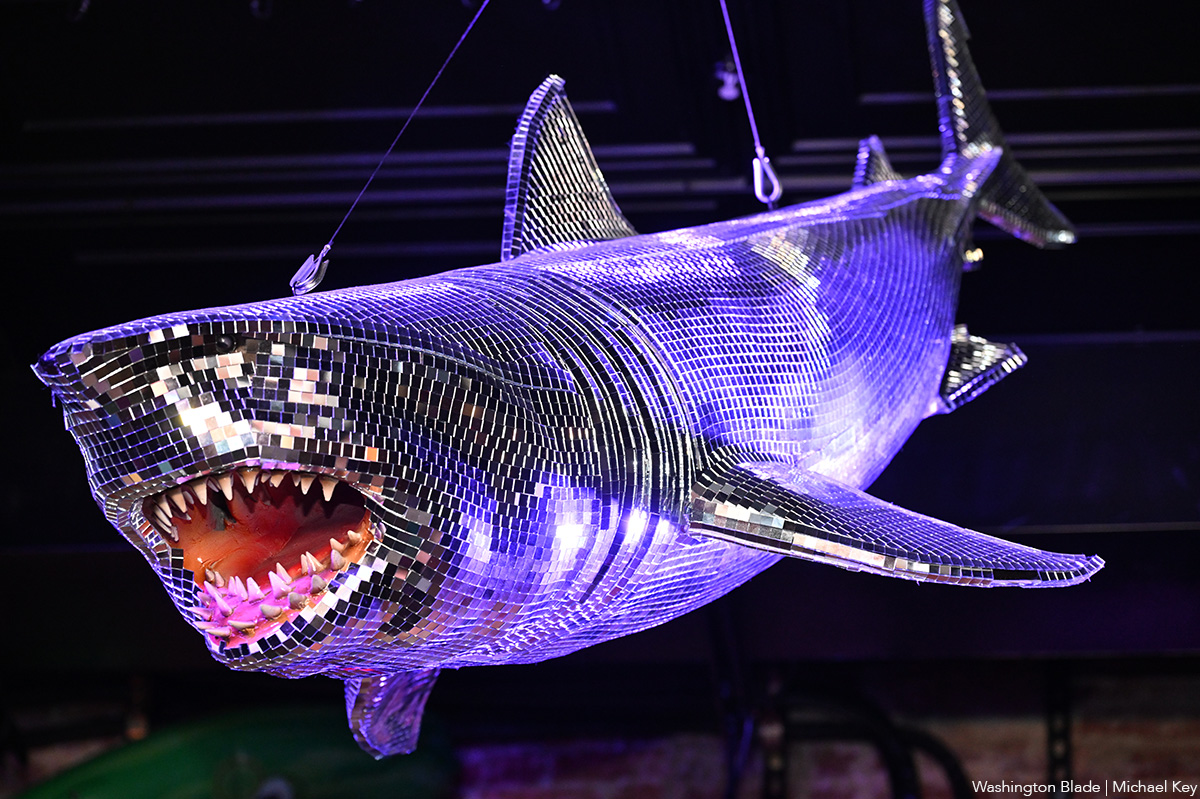
With Christmas in the rear view mirror, we can turn our attention to ringing in a much-anticipated New Year with a slew of local LGBTQ parties. Here’s what’s on tap.
Pitchers
This spacious Adams Morgan bar is hosting the “Pitchers’ Perfect New Year’s Eve.” There will be a midnight Champagne toast, the ball drop on the big screens, and no cover, all night long. The bar doesn’t close until 4 a.m., and the kitchen will be open late (though not until close). All five floors will be open for the party, and party favors are promised.
Trade
D.C.’s hottest bar/club combo is leaning into the Shark motif with its NYE party, “Feeding Frenzy.” The party is a “glitterati-infused Naughty-cal New Year’s Even in the Shark Tank, where the boats are churning and the sharks are circling.” Trade also boasts no cover charge, with doors opening at 5 p.m. and the aforementioned Shark Tank opening at 9 p.m.. Four DJs will be spread across the two spaces; midnight hostess is played by Vagenesis and the two sea sirens sensuously calling are Anathema and Justin Williams.
Number Nine
While Trade will have two DJs as part of one party, Number Nine will host two separate parties, one on each floor. The first floor is classic Number Nine, a more casual-style event with the countdown on TVs and a Champagne midnight toast. There will be no cover and doors open at 5 p.m. Upstairs will be hosted by Capital Sapphics for its second annual NYE gathering. Tickets (about $50) include a midnight Champagne toast, curated drink menu, sapphic DJ set by Rijak, and tarot readings by Yooji.
Crush
Crush will kick off NYE with a free drag bingo at 8 p.m. for the early birds. Post-bingo, there will be a cover for the rest of the evening, featuring two DJs. The cover ($20 limited pre-sale that includes line skip until 11 p.m.; $25 at the door after 9 p.m.) includes one free N/A or Crush, a Champagne toast, and party favors (“the legal kind”). More details on Eventbrite.
Bunker
This subterranean lair is hosting a NYE party entitled “Frosted & Fur: Aspen After Dark New Year’s Eve Celebration.” Arriety from Rupaul Season 15 is set to host, with International DJ Alex Lo. Doors open at 9 p.m. and close at 3 p.m.; there is a midnight Champagne toast. Cover is $25, plus an optional $99 all-you-can-drink package.
District Eagle
This leather-focused bar is hosting “Bulge” for its NYE party. Each District Eagle floor will have its own music and vibe. Doors run from 7 p.m.-3 a.m. and cover is $15. There will be a Champagne toast at midnight, as well as drink specials during the event.
Kiki, Shakiki
Kiki and its new sister bar program Shakiki (in the old Shakers space) will have the same type of party on New Year’s Eve. Both bars open their doors at 5 p.m. and stay open until closing time. Both will offer a Champagne toast at midnight. At Kiki, DJ Vodkatrina will play; at Shakiki, it’ll be DJ Alex Love. Kiki keeps the party going on New Year’s Day, opening at 2 p.m., to celebrate Kiki’s fourth anniversary. There will be a drag show at 6 p.m. and an early 2000s dance party 4-8 p.m.
Spark
This bar and its new menu of alcoholic and twin N/A drinks will host a NYE party with music by DJ Emerald Fox. Given this menu, there will be a complimentary toast at midnight, guests can choose either sparkling wine with or without alcohol. No cover, but Spark is also offering optional wristbands at the door for $35 open bar 11 p.m.-1 a.m. (mid-shelf liquor & all NA drinks).
a&e features
Local, last-minute holiday gift ideas
Celebrate the season while supporting area businesses

The DowntownDC Holiday Market is bustling. Union Station is decked out with its annual Christmas tree. Washingtonians have wrapped their houses and apartment balconies with festive lights and holiday decorations. The holiday season is here. And with stockings to fill and empty space under the tree, Washington’s local shops and artists have plenty to offer.
Show your LGBTQ and D.C. pride with the Washington Blade’s annual holiday gift guide.
To embrace the holiday buzz: The Blanco Nwèl cocktail from Alchy Cocktails. This Caribbean eggnog is one of Alchy Cocktail’s seasonal holiday cocktails. The flavor profile is similar to coquito, a traditional Puerto Rican Christmas drink with a coconut base. As a queer and Caribbean-owned business, Alchy Cocktails has been based out of Washington since 2021. Blanco Nwèl is available in both cocktail ($24) and mocktail ($12) online and at a variety of holiday markets, including the Tingey Plaza Holiday Market, the Flea Market at Eastern Market, Union Station’s Main Hall Holiday Market, and more. ($24)
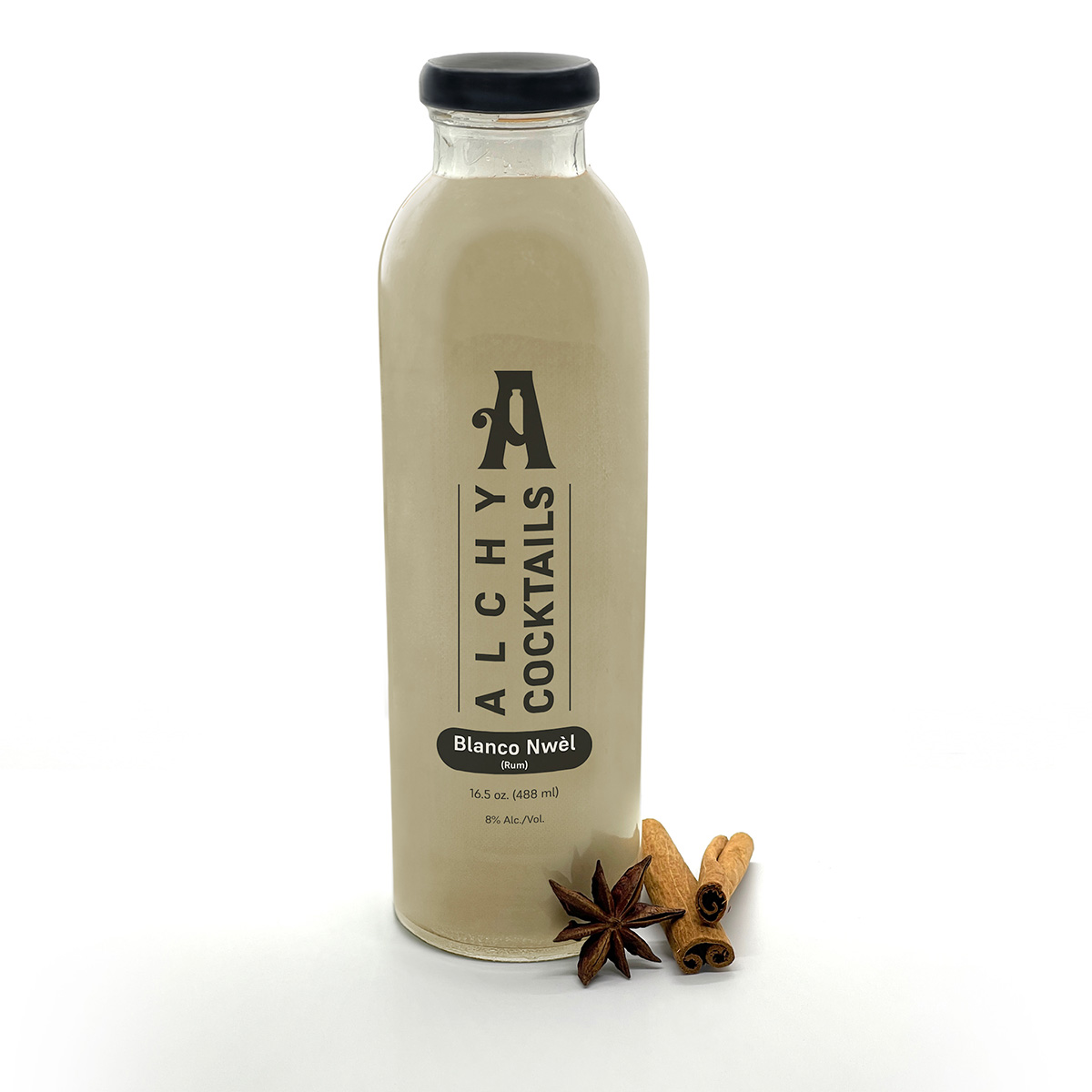
A spicy bite: Gordy’s Cajun Okra from Salt and Sundry. These spicy, tangy pickles pull on Southern Cajun-style flavors, packing a punch with paprika, cayenne, and more. Gordy’s is an LGBTQ-owned and Washington-based brand, making this gift an opportunity to support a local LGBTQ business straight from the jar. This pantry staple is available on Salt & Sundry’s website and at its locations in Union Market, Logan Circle, and its Georgetown holiday pop-up store. ($14)
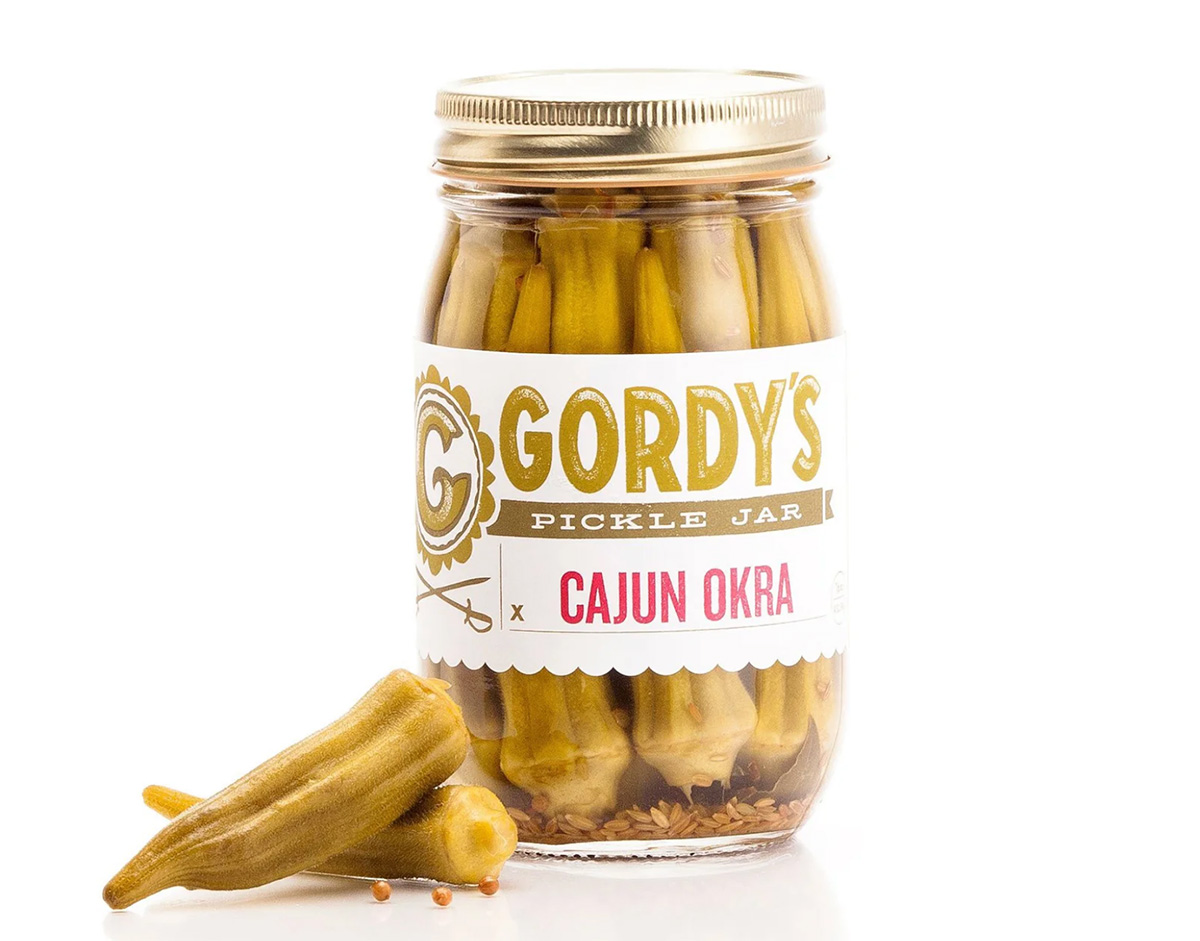

To celebrate Washington pride: The DC Landmark Tote Bag from The Neighborgoods. Native Washingtonians, visitors, friends and family alike will find something to love about this Washington-themed tote bag. Food trucks, the 9:30 Club, the Metro logo and pandas from the National Zoo are just some of the city’s landmarks depicted across the tote in a red, white, and blue color palette. The tote is a part of the DC Landmarks collection, which donates 10 percent of its sales to the American Civil Liberties Union. The Neighborgoods itself is a local, woman-owned business built out of a passion for screen-printing in 2013. The 100 percent cotton canvas tote is for sale online or at the DowntownDC Holiday Market. ($22)
To give friends and family their flowers: The Flowers Bandana from All Very Goods. This 100 percent cotton bandana was designed in Washington and hand printed in India. Its uniqueness comes in being covered with the faces of Black women, representing a “love letter to all women but especially Black women,” according to All Very Goods. The Black woman-owned and operated business, based out of Northwest Washington, has a mission to celebrate diversity and representation through its products. The bandana intends to give Black women their “flowers.” The Flowers bandana is available for purchase online. ($24)

To unlock culinary creativity: The Curious Chef Gift Collection from Each Peach Market. This customizable collection of kitchen oddities — ranging from tinned fish to chili oil — is a quirky gift for the most inventive chefs. The collection is available in a Standard Santa, Extra Goodies and Super Holiday Size for up to $165. The Washington-based market, founded in 2013, permits customers to make the collection special by specifying what unique ingredients are packaged, including products made by local or LGBTQ brands. Each Peach Market offers assembly and pick up in-person at its Mount Pleasant shop and also offers local delivery and nationwide shipping via its website. ($85)
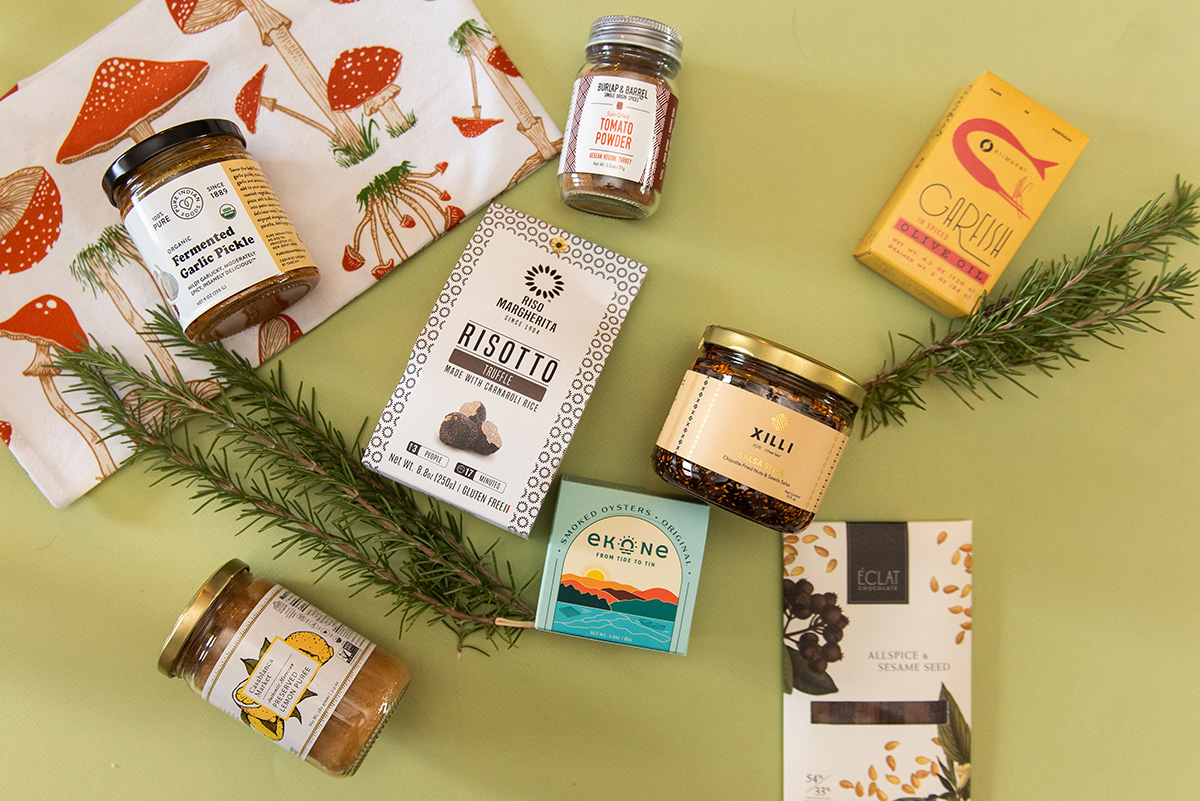
To give a touch of sweetness: The DC Landmark Chocolate Covered Oreo Holiday Cookies from Capital Candy Jar. Wrapped in a festive red bow, this box of nine cookies embraces love for Washington and the holiday season in one. Among the dark and milk chocolate covered cookies are images of the U.S. Capitol, the White House, the Lincoln Memorial, the Jefferson Memorial and festive hollies. The treat, packaged in a Hill East facility just a few blocks from the Capitol, is available for purchase online and at the DowntownDC Holiday Market. ($23.95)


To celebrate queer gaming: Thirsty Sword Lesbians from Labyrinth Games & Puzzles. This roleplaying game embraces lesbian culture by unlocking a world of swords, romance, and battle. Ideal for group settings, the book presents a system of world building and character identities that are best brought to life by creative minds. Labyrinth, which has been a local Washington business for more than 15 years, celebrates non-digital fun through games and puzzles that connect the community. This gift is offered online and at Labyrinth’s Capitol Hill location. ($29.99)
To make a bold statement: The “Resist” T-shirt from Propper Topper. This locally screen-printed black tee features the Washington flag designed within a raised fist, symbolizing both Washington pride, and political resistance. The shirt is made exclusively by Propper Topper, a local Washington business that evolved from a hat shop to a gift store since opening in 1990. The tri-blend unisex shirt is available both for pickup at Propper Topper’s Cathedral Heights location and shipping via the online site. ($32)
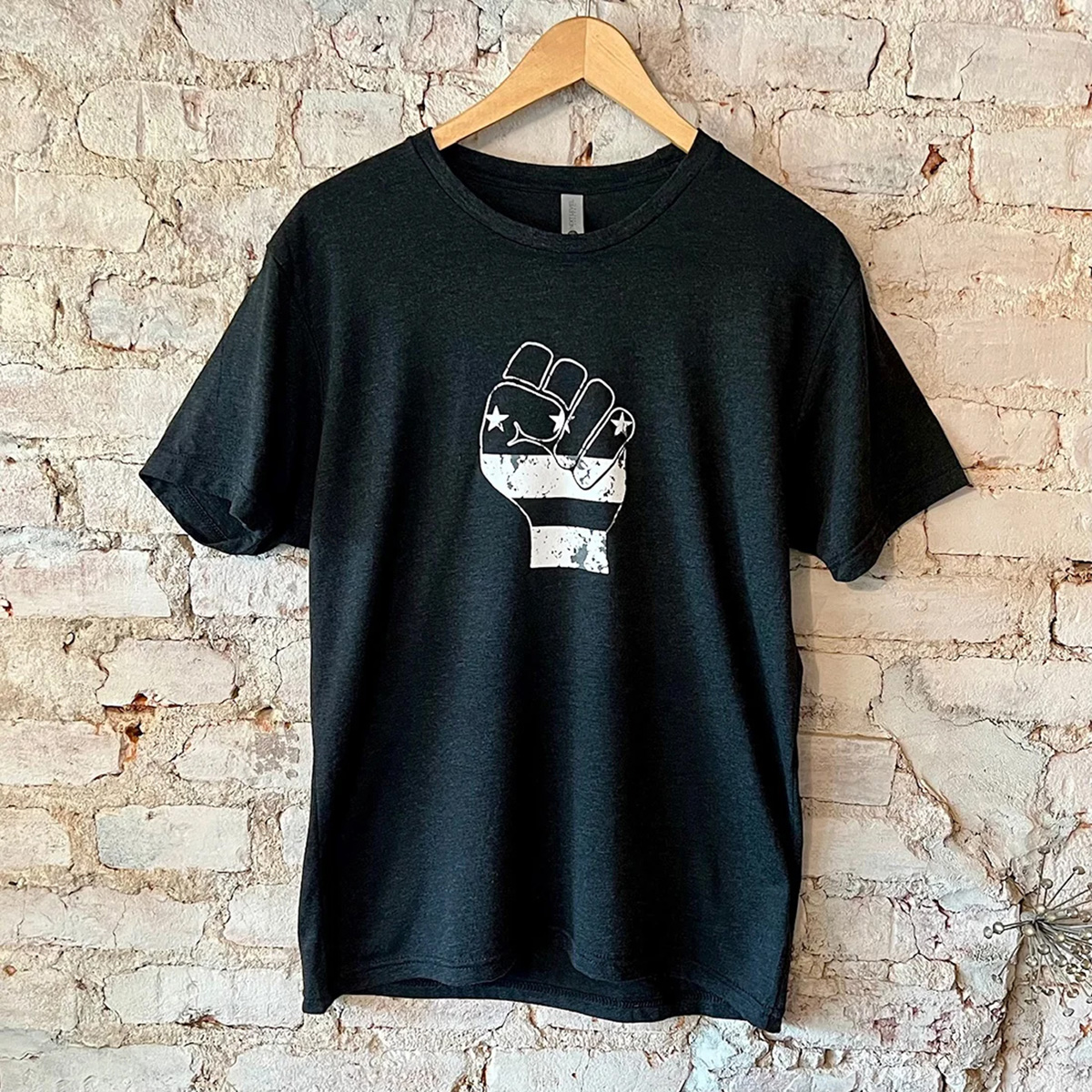
To keep it c(g)lassy: The Glass Ball earrings from Blue Moon Aquarius. Gifting can rarely go wrong when it comes to a new pair of earrings. The unique statement earrings — made of polymer clay, glass, and 18k gold plating over surgical steel — are hand cut, sanded and assembled in Washington, meaning each set is unique. Blue Moon Aquarius, a local brand, is known for its small batch jewelry and home decor designed with clay materials. Available in oxblood, hunter green, lavender, and bluestone color palettes, these earrings are available for purchase on Blue Moon Aquarius’ website and at the DowntownDC Holiday Market. ($48)
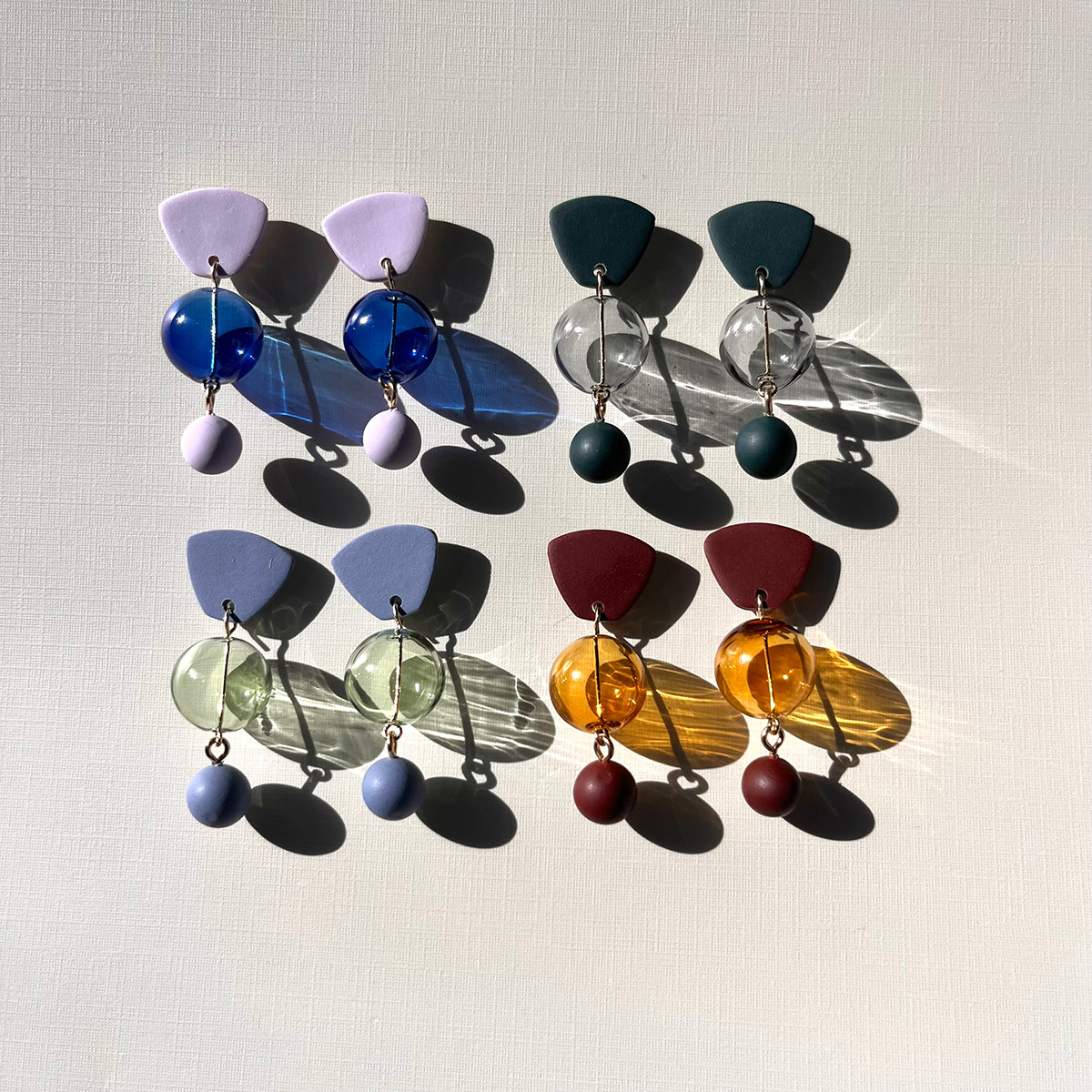
To elevate a holiday tea or charcuterie party: The Honey Flight: Tea Lover’s Selection from BannerBee. This local honey company presents the ideal gift to make cozying up with a cup of tea slightly more special. The Honey Flight contains three types of raw wildflower honey infused with fair trade Ugandan vanilla bean, chai spices, and locally sourced lemon thyme herb. The gift is also an opportunity to uplift a family company based in the Mid-Atlantic that offers all-natural, sustainable products. The flight is available online, at the DowntownDC Holiday Market or at the Arlington Courthouse and Dupont Farmers’ Markets. ($36)
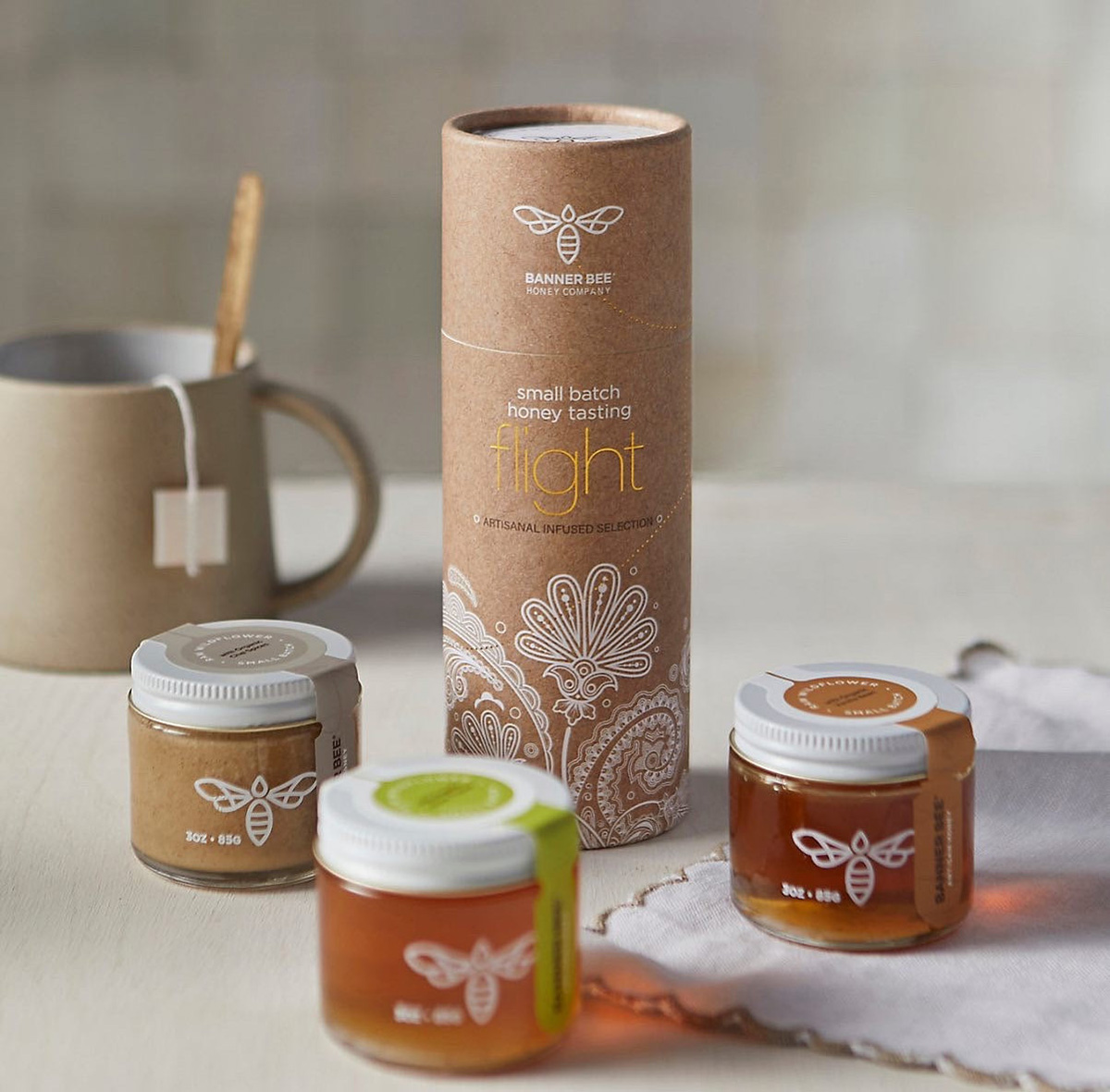
For Baltimore shoppers: If you’re in Charm City, don’t miss Balston Mercantile, opened by a gay couple in June. Their gorgeous shop in the Hampden neighborhood offers an array of unique, upscale finds, from barware and artwork to cookbooks and home decor and more. (849 W. 36th St.)
a&e features
Have yourself a merry John Waters Christmas
Annual holiday show returns to Alexandria and Baltimore
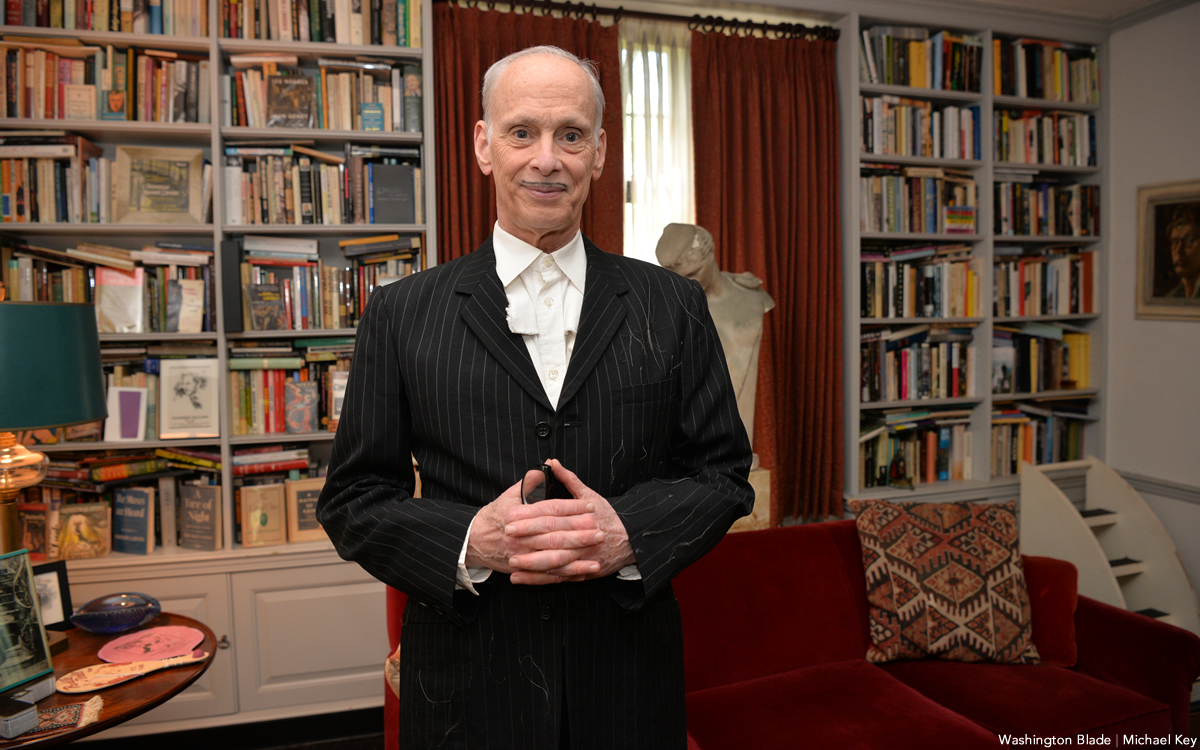
When it comes to iconic Christmas scenes in movies, none can top the tree-toppling tantrum thrown by cha-cha heels-deprived Dawn Davenport in John Waters’s fifth full-length feature “Female Trouble” from 1974. Therefore, it’s not surprising that Waters continues to make art out of Christmas, performing his spoken word Christmas tour in cities across the country. Waters has even more reason to celebrate with the release of his new red vinyl 7” single, a cover of Little Cindy’s “Happy Birthday Jesus (A Child’s Prayer)” on the A-side, and “A Pig Latin Visit From St. Nicholas” on the B-side. If you’re still looking for unique Christmas gifts, consider this record. As always, John was kind enough to make time for an interview in advance of his tour dates.
BLADE: John, in preparation for this interview with you, I went back and listened to Little Cindy’s original rendition of “Happy Birthday Jesus (A Child’s Prayer)” on your “A John Waters Christmas” CD.
JOHN WATERS: One thing I did, if you notice, I make the same stumble in my recording that she did in the original.
BLADE: It sounded to me like she got choked up.
WATERS: No, I think she just stumbles over a word, so I stumbled over the same word. It’s appropriation, insanely.
BLADE: Is this a song you first became aware of in your youth or when you were an adult?
WATERS: When I was doing the Christmas album, I had this friend named Larry Benicewicz. He was kind of my idea man with music. He knew every single old record. I would say to him, “Weird Christmas songs,” when we were doing a soundtrack, or a song about bears, or a song about this, and he would give me all these tapes. It was one of the ones he played for me. A lot of the songs I put in my movies and on my records, I did know as a kid. I did not know this one, but I immediately embraced it. I don’t think it’s campy. I think it really is spiritual in a weird way. My doing it makes it a novelty record. I am really for novelty records, and there aren’t any anymore. Why was there not a COVID novelty record? That’s insane. The dance “The Bug” that’s on the “Hairspray” soundtrack would be perfect for COVID.
BLADE: The thing that struck me was that for a Christmas song in the voice of a child, a kind of death pall hangs over it, with lines like, “If I was good you’d let me live with you” and “they nailed you to the cross, they wanted you to die.”
WATERS: All of it! When I see children at midnight mass kneeling in front of a nude man nailed to a cross, I feel like I’m at The Eagle! It is S&M, it’s creepy. I took the same cover (photo) from her record to parody and put my face on it. The same thing I did with The Singing Dogs last year when I covered (their version of) “Jingle Bells.” I’m really into novelty records. I love them and I’m trying to bring them back. I don’t expect anybody to ever play these records. Even The Singing Dogs one said on it, “Please do not play this record” [laughs]. And the flipside, the Pig Latin version, is almost impossible to listen to.
BLADE: I’m so glad you mentioned that. “A Pig Latin Visit From St. Nicholas” reminded me of the lost art of speaking in Pig Latin. I also recall watching the PBS series “Zoom” as an adolescent and learning to speak “ubbi dubbi,” a distant relative of Pig Latin. Do you think that the time is right for a Pig Latin or ubbi dubbi revival?
WATERS: Here’s the thing, I never could pick up any language, except Pig Latin. I’ve been in every foreign country. Foreign countries have given me money to learn to speak the language. I can never do it! But Pig Latin…my parents and other parents in the ‘50s spoke Pig Latin so kids couldn’t understand what they were saying. Then my mother taught it to me, and I used it. The hardest take to shoot in “Pink Flamingos” was not eating the dog shit. It was when the cast skipped, in one take, saying “E-way, are-yay e-they ilthiest-fay eople-pay in-hay e-they ole-hay ide-way orld-way.” We’re the filthiest people in the whole wide world in Pig Latin. We had to do so many takes so they could do it once without screwing it up. In “Polyester,” Edith (Massey) answers the phone, “ello-hay.” I did a photo piece where it was all subtitled in Pig Latin. Like “osebud-Ray” (from “Citizen Kane”) or in “Streetcar,” “ella-Stay!” [Laughs] All the iconic dialogue translated into Pig Latin. My assistant who helped me do it, had never heard of Pig Latin. She really got good at it because she lived in many foreign countries and can pick up languages. But it’s not that easy to do it correctly and read it. Your computer will translate into Pig Latin.
BLADE: AI understands Pig Latin?
WATERS: I guess that’s AI. It wasn’t 100% right, but it was close. I can speak it if I look at it, but just do a bit at a time. It was a challenge that no one would possibly care about or want to do.
BLADE: I think you pulled it off very well.
WATERS: If you want people to leave on Christmas morning, you put it on. That’s how you get your guests to leave. It’s time to go.
BLADE: Ood-gay i-bay! How did your relationship with record label Sub Pop, which released 2021, 2022, 2024, and new 2025 holiday singles, come about?
WATERS: I believe the first thing I did for them was “Prayer to Pasolini.” They came to me through Ian Brennan. He’s won a couple Grammys for World Music, but he is also is one of my agents who does the Christmas tour and a lot of my shows, anything with music. He helped me arrange each one of the songs. He had a relationship with Sub Pop. It was perfect. My friends in Baltimore, (the band) Beach House, have had huge success.
BLADE: That’s right, they’re on Sub Pop!
WATERS: Yes! I’m happy to be on it. I’ve even been to the warehouse and posed for pictures like Jackie Suzanne used to do.
BLADE: Is there any chance that “A John Waters Christmas” might be reissued on vinyl by Sub Pop?
WATERS: No. It’s such a nightmare to get the rights and to renew them. You have to find the publisher and the writer, and they usually hate each other. It doesn’t matter if it’s obscure or famous, it’s hard to get. You have to make the deal. The singer doesn’t get anything unless they play it on the radio. It would be so complicated legally, and there would be such a [laughs] tiny audience for it. I hope it will come out again. The same thing with the one for Valentine’s Day. I had two of them that did quite well when they came out; “A Date With John Waters and “A John Waters Christmas.” The “John Waters Christmas” album is still the soundtrack that plays whenever I’m doing my spoken word Christmas show as people are entering the theater.
BLADE: Aside from your annual Christmas show tour, what else do you do for the holidays now, and are there any traditions that you’ve carried over from your family?
WATERS: Certainly! I have two sisters, my brother’s widow, and me, so there are four and we take turns each year to have the Christmas dinner. Mine was last year. An entire sit-down dinner. Mom’s China, the silverware, the entire full dinner. It’s pretty traditional. I don’t have a Christmas tree, but I do decorate the electric chair from “Female Trouble.” That is a tradition in my family. We do have Christmas decorations, but they’re usually weird ones that fans sent me. I have one with Divine knocking over the Christmas tree, and the Christmas tree lights up, all sorts of amazing things. There is definitely a tradition here that might be a little altered, but it is definitely a tradition. I used to have a giant party every year, but COVID ended that. I still wouldn’t want 200 people in my house breathing right now.
BLADE: I was looking at your tour schedule and wondered if there are any new cities in which you’ve never performed the John Waters Christmas show that have been added to this year’s schedule?
WATERS: I don’t think there’s a city in America in which I haven’t done one show! The only places I haven’t been to are Hawaii and Alaska. I could do it there, but it’s too long on a tour. I can’t think of a city I haven’t played in in America over the last 50 years. The Christmas show is completely different every year. It doesn’t matter if you saw it last year.

















